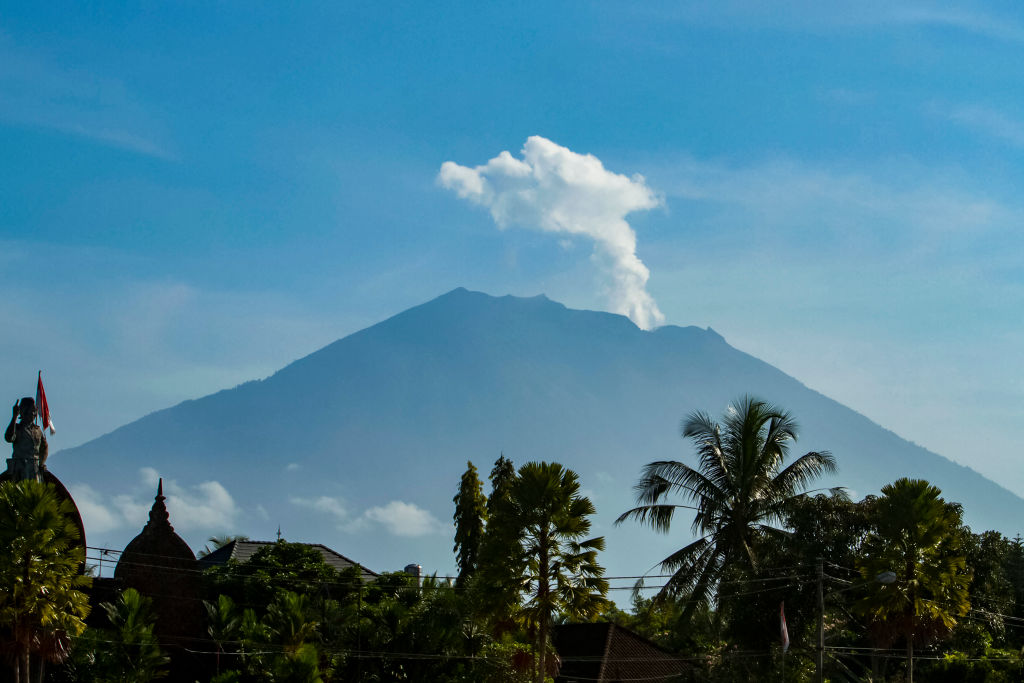Got a holiday to Bali planned? You may want to postpone it.
Bali's Mount Agung, the popular holiday island's highest point, erupted on Nov. 21, its first time in more than 50 years, according to Indonesia's National Agency for Disaster Management (BNPB).
According to news agencies like The Jakarta Post and BBC, thousands living within 6km of the volcano are fleeing their homes to escape the volcanic ash descending on at least five villages in the radius.
Videos of the scene show thick black smoke spewing from the volcano's peak:
Should you go? Probably not, especially near the volcano
On Wednesday (Nov. 22), Singapore's Ministry of Foreign Affairs issued a travel advisory urging against non-essential travel, especially to the affected areas.
Even if you're not going to or near Mount Agung, though, you may want to reconsider your holiday plans.
The eruption may trigger a proliferation of volcanic ash clouds that affect air visibility and severely disrupt air travel — in the most grievous of scenarios, flights may be delayed or cancelled and the airport may even have to be closed.
Here's the advisory in full:
Travel Advisory: Volcanic Activity in Bali [21 November 2017]
Mount Agung erupted on 21 November 2017. In recent months, Indonesia’s National Disaster Mitigation Agency has been warning residents and tourists to stay away from an exclusion zone of 7.5 km around the crater on Bali.
Singaporeans should defer non-essential travel to the affected areas of the island at this juncture. Volcanic eruptions could result in ash clouds that could severely disrupt air travel, leading to closures of affected airports. Ash fall could also affect outdoor activities. Singaporeans currently in Bali should monitor these developments closely, avoid Mount Agung and its vicinity. You are advised to take all necessary precautions for your personal safety, monitor the local news closely and heed the instructions of the local authorities. You should also be ready to evacuate at short notice. Do purchase comprehensive travel and medical insurance and be familiar with the terms and coverage.
Singaporeans in Bali are advised to stay in close touch with family and friends so that they know you are safe.
Singaporeans travelling overseas are also encouraged to e-Register with the Ministry of Foreign Affairs at https://eregister.mfa.gov.sg/, so that we can contact you should the need arise.
Those in need of consular assistance may contact the Singapore Embassy in Jakarta or the Ministry of Foreign Affairs Duty Office at:
Embassy of the Republic of Singapore in Indonesia (Jakarta)
Jln H R Rasuna Said, Kuningan, Block X/4, KAV No 2,
Kuningan, Jakarta Selatan 12950
Tel: + 62 (21) 2995 0400 or +62 811 863 348 (24-hours)
Ministry of Foreign Affairs Duty Office (24-hours)
Tanglin, Singapore 248163
Tel: 6379 8800, 6379 8855
Email: [email protected]
[related_story]
It's been rumbling for awhile
The mountain first started rumbling in Aug. 2017, and the Indonesian government issued a warning, which was subsequently lowered less than a month ago.
The MFA previously issued a similar travel advisory warning Singaporeans against heading to Mount Agung or anywhere near it on September 23, when Indonesia's authorities issued an escalated warning of the eruption potentially happening within 24 hours of that date.
A few days later, the BNPB issued a statement saying Bali was still safe for tourists, as the tourist destinations were located a distance from the exclusion zone within the vicinity of the volcano.
The last time Mount Agung erupted was in 1963, a large-scale disaster that killed an estimated 1,700 people. Minor eruptions and lava flows seen from the volcano for about a year after the initial eruption.
Indonesia is located along the Pacific Ring of Fire, a region known for its volcanic activity. In 2013, Mount Sinabung erupted, with minor smoke spewing and lava flows to this day. And in 2010, Mount Merapi erupted, killing 353 people.
Top image via AGUS RANU/AFP/Getty Images.
If you like what you read, follow us on Facebook, Instagram, Twitter and Telegram to get the latest updates.
